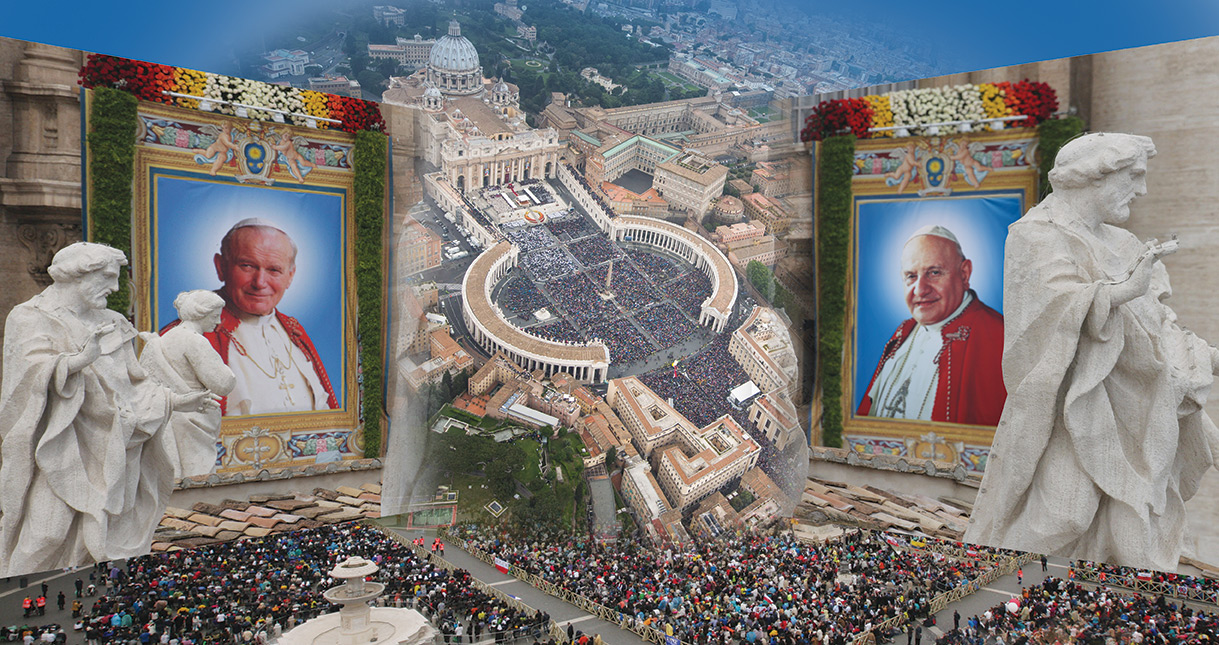
The images of the two new saints hanging from the balconies of St. Peter’s Basilica (the image of John Paul was a 1989 photo by our photographer Grzegorz Galazka) and an aerial photo of the vast crowd during the April 27 Mass.
On April 27 in Rome, the Feast of Divine Mercy, Pope Francis canonized two recent Popes, John XXIII (1958-1963) and John Paul II (1978-2005) in a ceremony attended by about 1 million people, including Emeritus Pope Benedict XVI, causing some to call the event “The Day of the Four Popes.”
From the moment Pope Francis said, “We declare and define Blesseds John XXIII and John Paul II to be saints” and “they are to be venerated as such by the whole Church,” their October feast days could automatically be celebrated at Masses around the world. St. John’s feast day is Oct. 11, the anniversary of the day in 1962 that he opened the Second Vatican Council. St. John Paul’s feast day is Oct. 22, the anniversary of the inauguration of his pontificate in 1978. Pope John was beatified in 2000 and Pope John Paul in 2011. At a canonization, the Pope issues a formal decree recognizing the candidate’s holiness and permitting public remembrance of the candidate at liturgies throughout the Church.

Retired Pope Benedict XVI embraces Pope Francis before the canonization Mass for Sts. John XXIII and John Paul II in St. Peter’s Square at the Vatican April 27. It was Benedict’s first public appearance in a liturgy since his resignation in February 2013 (CNS photo).
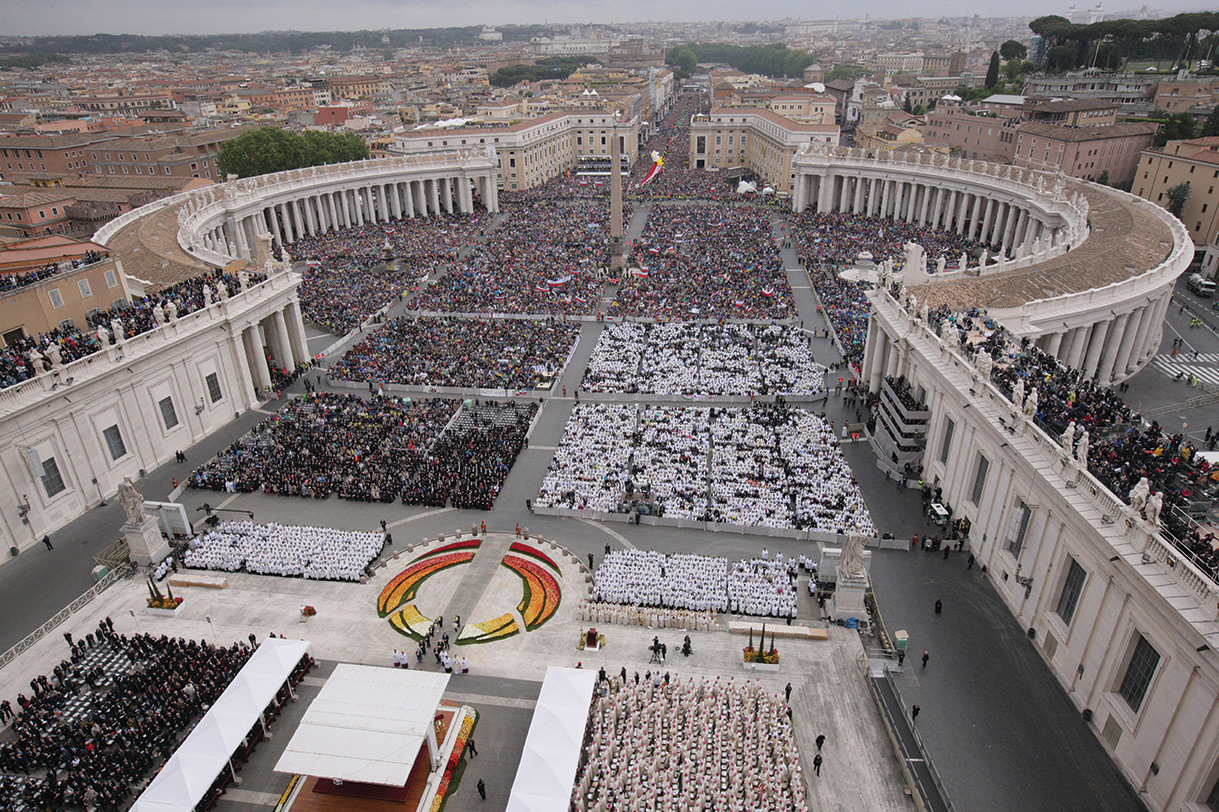
St. Peter’s Square and the Via della Conciliazione, as well as streets and bridges even further away were filled with about 1 million pilgrims who wished to be present at the Mass of Canonization of the two saints. It was a cool, slightly overcast day with a light breeze.
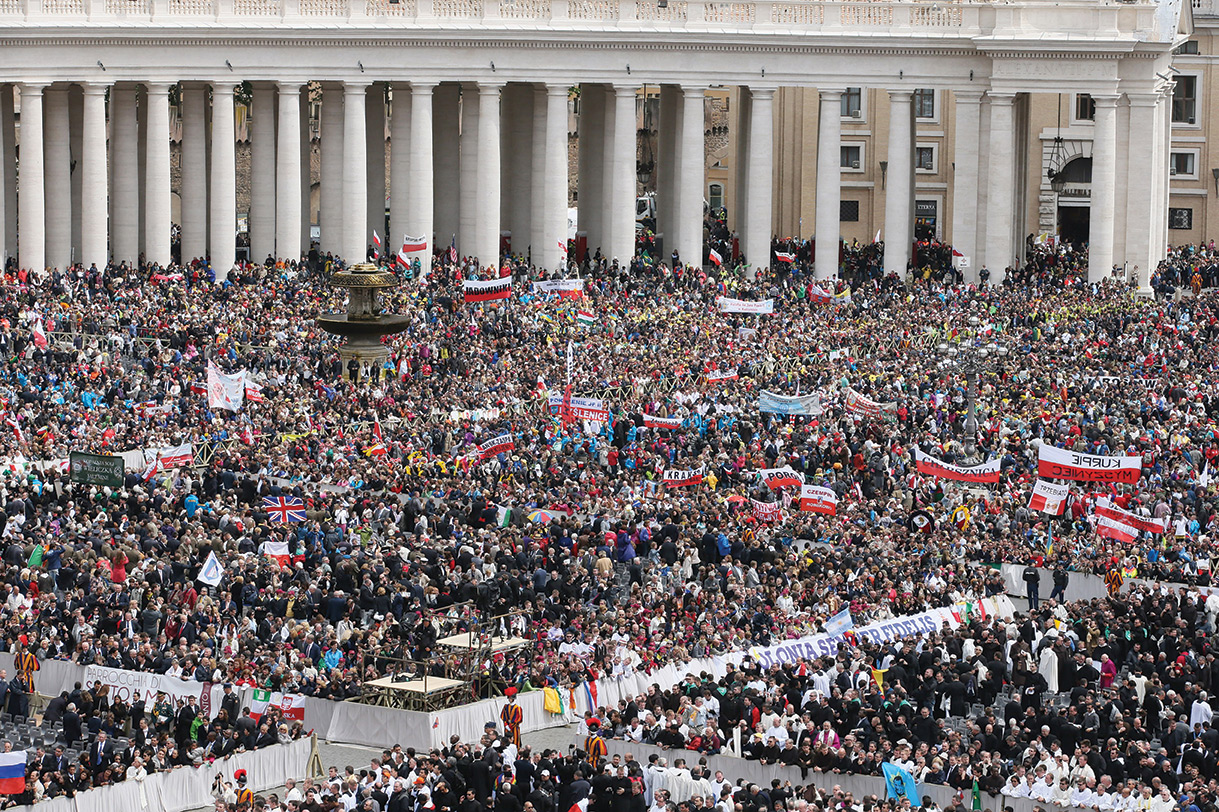
In the vast crowd which attended the canonization ceremony were men, women and children from every continent and many nations.
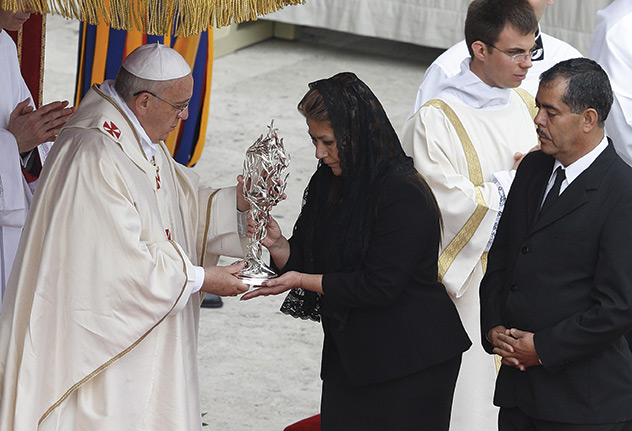
Above, Pope Francis kisses the relic of St. John XXIII presented by Father Ezio Bolis, director of the Pope John XXIII Foundation. Below, Francis gives back the relic of St. John Paul II to Floribeth Mora Diaz whose cure from an aneurysm in 2011 was the second miracle in St. John Paul’s cause.
HOLY MASS AND RITE OF CANONIZATION OF BLESSEDS JOHN XXIII AND JOHN PAUL II
Homily of Pope Francis
St. Peter’s Square Second Sunday of Easter (Divine Mercy Sunday), April 27, 2014
At the heart of this Sunday, which concludes the Octave of Easter and which Saint John Paul II wished to dedicate to Divine Mercy, are the glorious wounds of the risen Jesus.
He had already shown those wounds when he first appeared to the Apostles on the very evening of that day following the Sabbath, the day of the resurrection. But, as we have heard, Thomas was not there that evening, and when the others told him that they had seen the Lord, he replied that unless he himself saw and touched those wounds, he would not believe. A week later, Jesus appeared once more to the disciples gathered in the Upper Room. Thomas was also present; Jesus turned to him and told him to touch his wounds. Whereupon that man, so straightforward and accustomed to testing everything personally, knelt before Jesus with the words: “My Lord and my God!” (Jn 20:28).
The wounds of Jesus are a scandal, a stumbling block for faith, yet they are also the test of faith. That is why on the body of the risen Christ the wounds never pass away: they remain, for those wounds are the enduring sign of God’s love for us. They are essential for believing in God. Not for believing that God exists, but for believing that God is love, mercy and faithfulness. Saint Peter, quoting Isaiah, writes to Christians: “By his wounds you have been healed” (1 Pet 2:24, cf. Is 53:5).
Saint John XXIII and Saint John Paul II were not afraid to look upon the wounds of Jesus, to touch his torn hands and his pierced side. They were not ashamed of the flesh of Christ, they were not scandalized by him, by his cross; they did not despise the flesh of their brother (cf. Is 58:7), because they saw Jesus in every person who suffers and struggles. These were two men of courage, filled with the parrhesia [“candor” or “bold truth-telling”] of the Holy Spirit, and they bore witness before the Church and the world to God’s goodness and mercy.
They were priests, and bishops and Popes of the 20th century. They lived through the tragic events of that century, but they were not overwhelmed by them. For them, God was more powerful; faith was more powerful – faith in Jesus Christ the Redeemer of man and the Lord of history; the mercy of God, shown by those five wounds, was more powerful; and more powerful too was the closeness of Mary our Mother.
In these two men, who looked upon the wounds of Christ and bore witness to his mercy, there dwelt a living hope and an indescribable and glorious joy (1 Pet 1:3,8), the hope and the joy which the risen Christ bestows on his disciples, the hope and the joy which nothing and no one can take from them. The hope and joy of Easter, forged in the crucible of self-denial, self-emptying, utter identification with sinners, even to the point of disgust at the bitterness of that chalice. Such were the hope and the joy which these two holy Popes had received as a gift from the risen Lord and which they in turn bestowed in abundance upon the People of God, meriting our eternal gratitude.
This hope and this joy were palpable in the earliest community of believers, in Jerusalem, as we have heard in the Acts of the Apostles (cf. 2:42-47). It was a community which lived the heart of the Gospel, love and mercy, in simplicity and fraternity.
This is also the image of the Church which the Second Vatican Council set before us. John XXIII and John Paul II cooperated with the Holy Spirit in renewing and updating the Church in keeping with her pristine features, those features which the saints have given her throughout the centuries. Let us not forget that it is the saints who give direction and growth to the Church. In convening the Council, Saint John XXIII showed an exquisite openness to the Holy Spirit. He let himself be led and he was for the Church a pastor, a servant-leader, guided by the Holy Spirit. This was his great service to the Church; for this reason I like to think of him as the Pope of openness to the Holy Spirit.
In his own service to the People of God, Saint John Paul II was the Pope of the family. He himself once said that he wanted to be remembered as the Pope of the family. I am particularly happy to point this out as we are in the process of journeying with families towards the Synod on the Family. It is surely a journey which, from his place in heaven, he guides and sustains.
May these two new saints and shepherds of God’s people intercede for the Church, so that during this two-year journey toward the Synod she may be open to the Holy Spirit in pastoral service to the family. May both of them teach us not to be scandalized by the wounds of Christ and to enter ever more deeply into the mystery of divine mercy, which always hopes and always forgives, because it always loves.

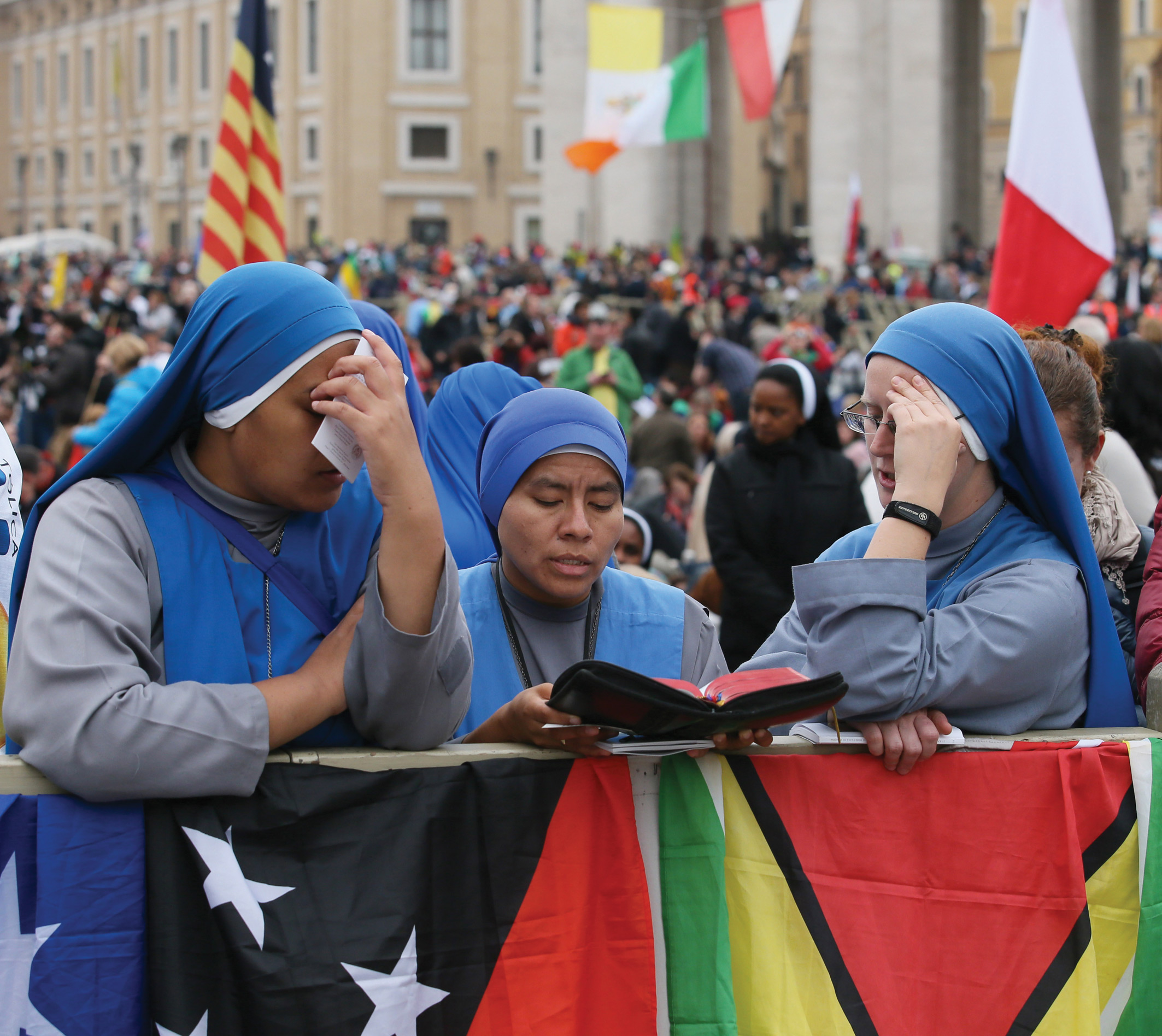
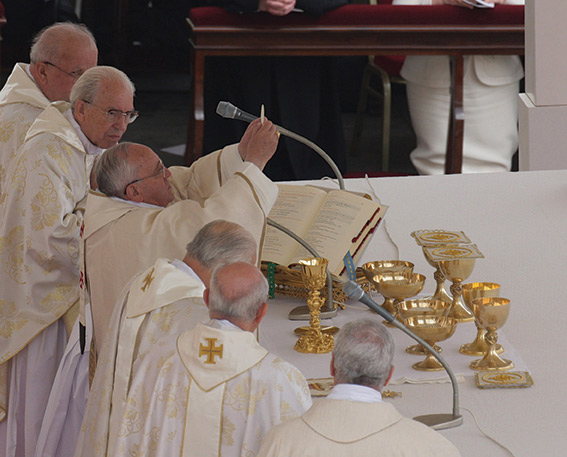


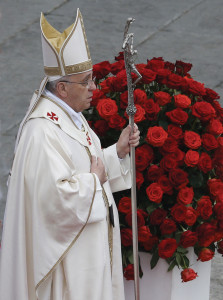
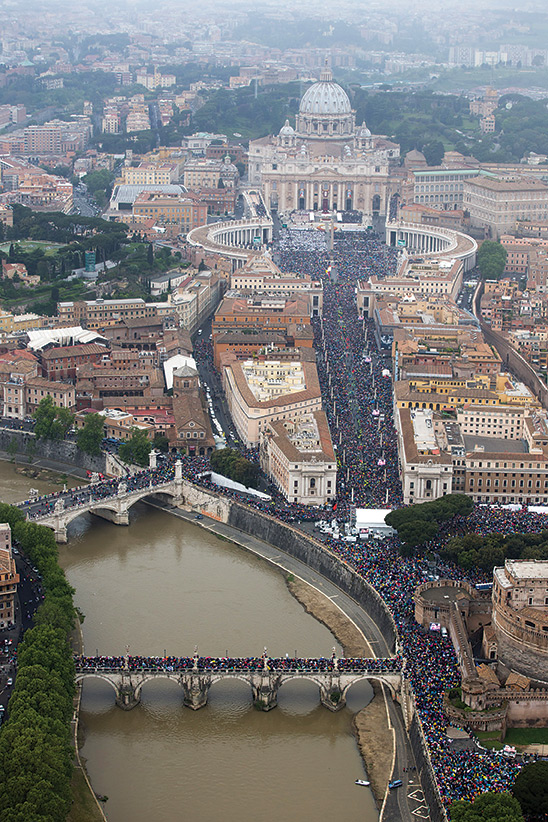
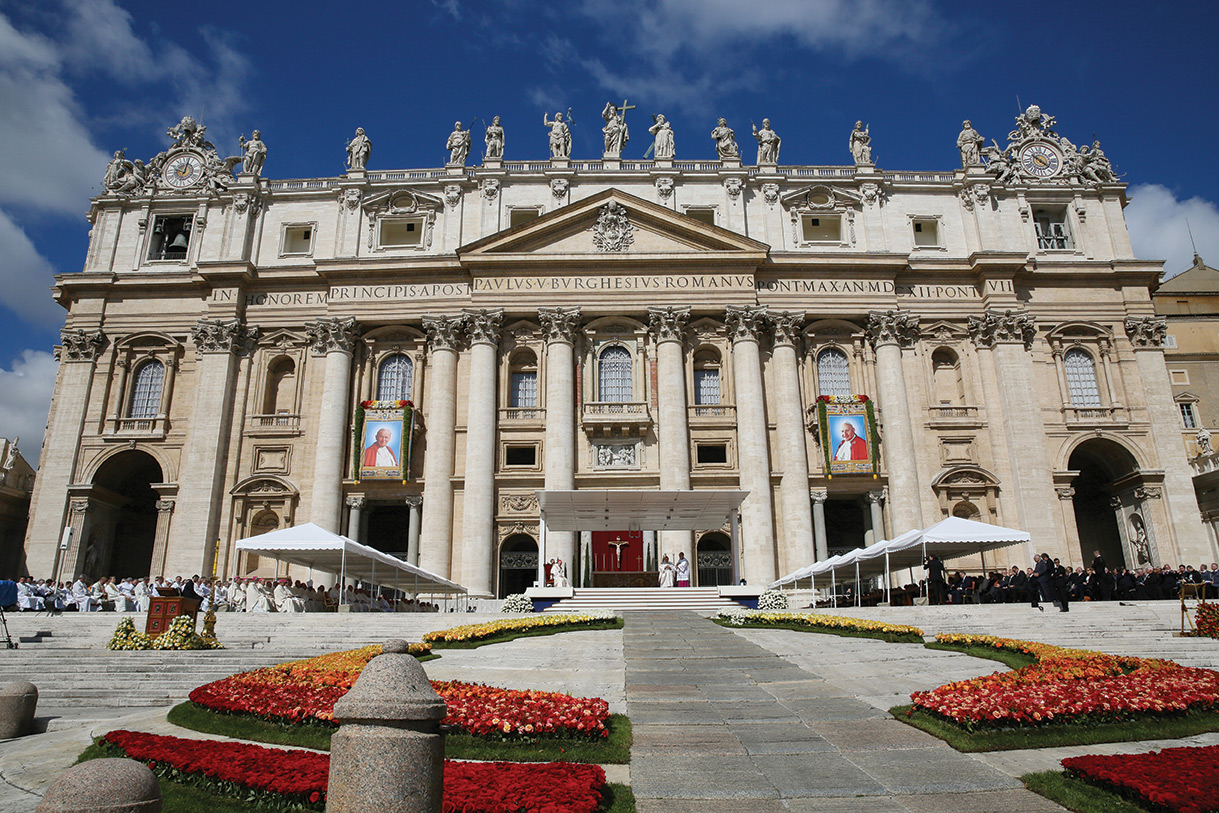
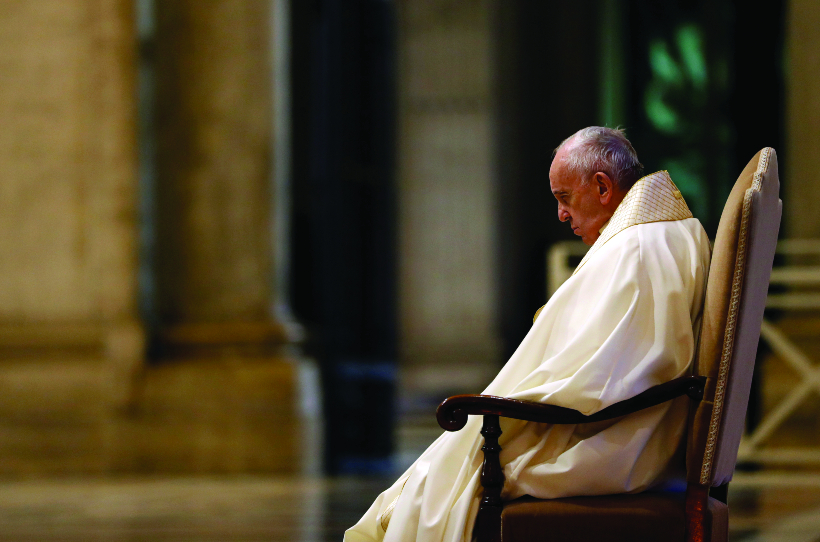

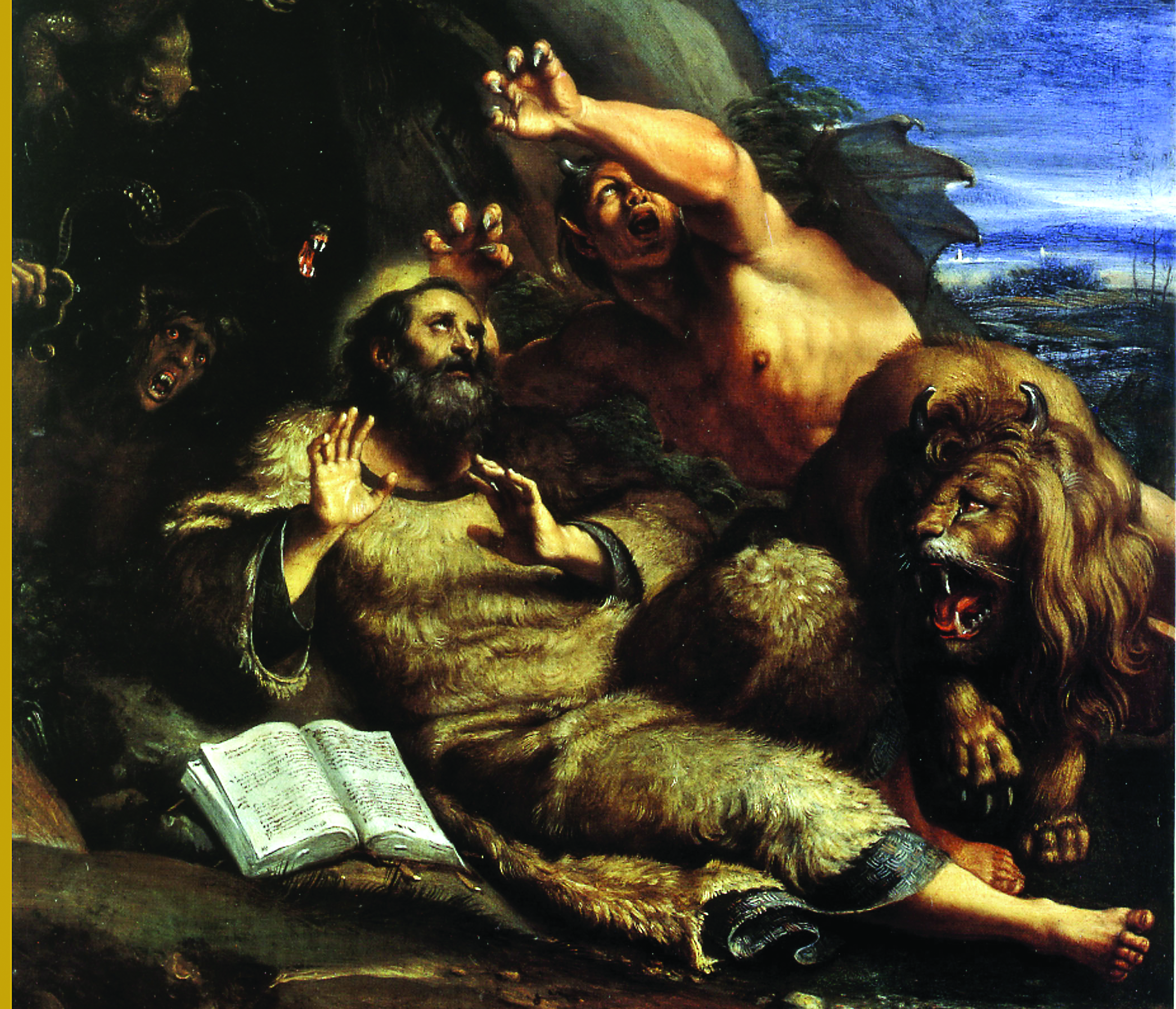
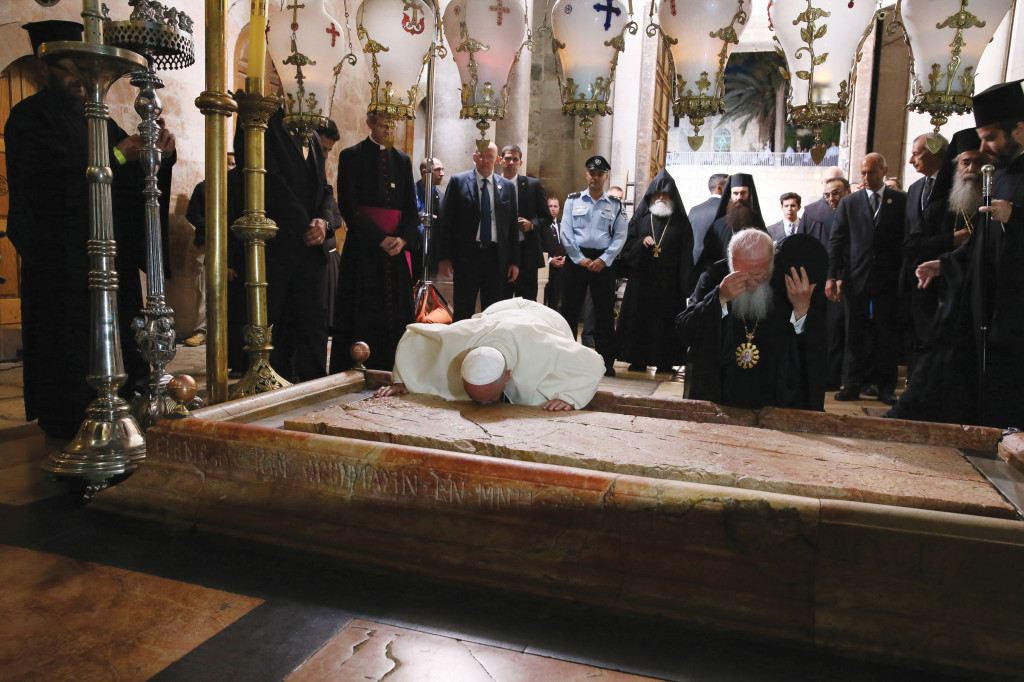
Facebook Comments